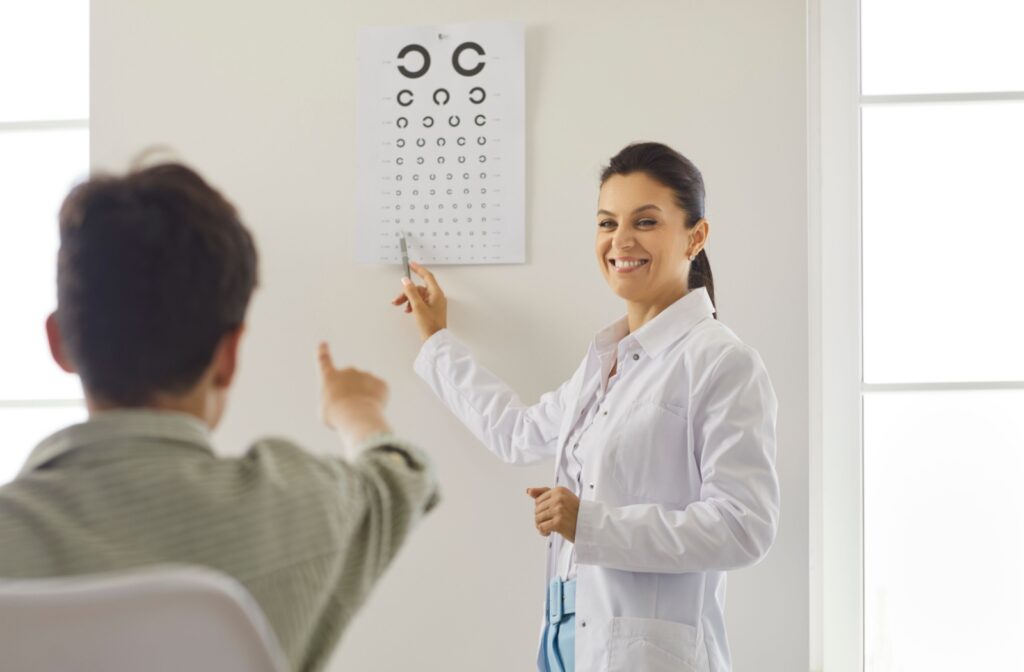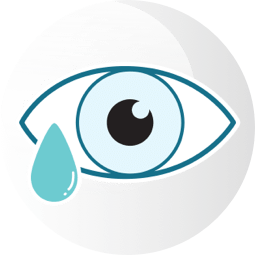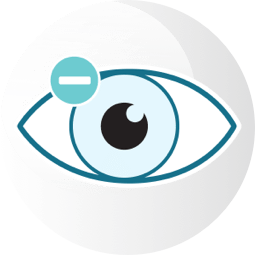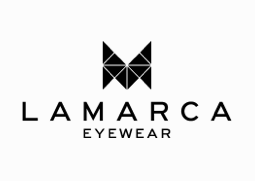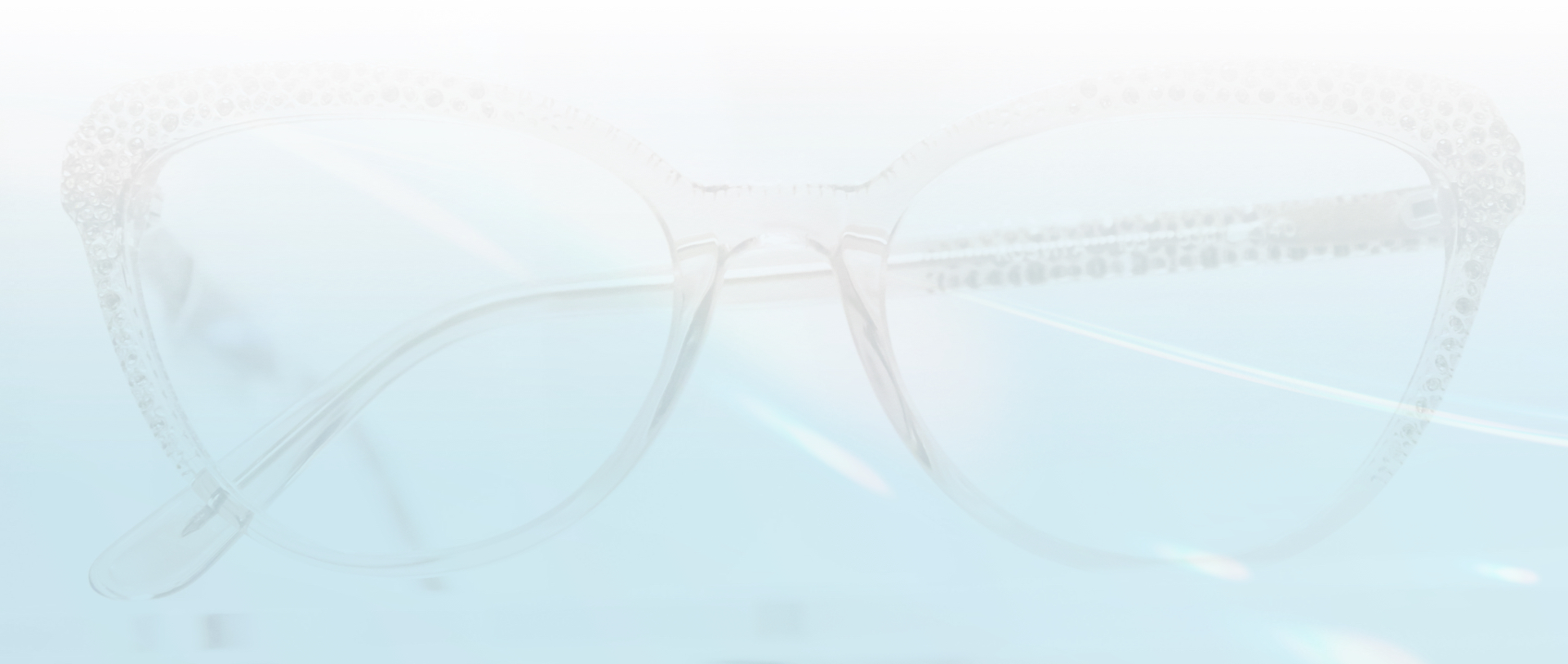Blurry vision can sneak up on you. One day you’re squinting to read road signs, the next you are holding your phone at arm’s length. Whatever the activity, changes in vision can affect more than you expect.
Myopia, hyperopia, and presbyopia are three common causes of blurry vision. Each has different symptoms and differing treatments. Myopia makes it difficult to see distant objects, hyperopia makes it hard to see objects up close, and presbyopia is an age-related decline in vision.
What Is Myopia?
Myopia, often called nearsightedness, makes it hard to clearly see distant objects. Myopia occurs when the eyeball is too long, or when the cornea is too curved. These structural changes cause light entering the eye to focus in front of the retina (the part of the eye that translates light into signals for the brain) rather than directly onto it.
Symptoms of myopia include:
- Blurry vision when viewing distant objects, like road signs or movie screens.
- Frequent squinting to improve focus.
- Eye strain or persistent headaches.
- Difficulty seeing clearly during activities requiring distance vision.
Rates of myopia are rising globally, particularly among children. Increased use of screens, reduced outdoor time, and prolonged close-up tasks like reading or using a tablet may play a role in this trend.
How to Treat Myopia
Although myopia cannot be reversed, there are several treatment options:
- Eyeglasses or contact lenses: Corrective lenses are the most common solution for clear vision.
- Myopia control for children: Targeted treatments like ortho-k lenses or atropine eye drops can slow the progression of myopia in children.
- Laser vision correction: Procedures like LASIK reshape the cornea to provide clear vision without glasses or contacts for many adults.
Controlling myopia early is critical for preventing high myopia, which can lead to an increased risk of serious eye issues like glaucoma or retinal detachment later in life.
What Is Hyperopia?
Hyperopia, or farsightedness, is the opposite of myopia. Hyperopia causes nearby objects to appear blurry or out of focus, and it occurs when the eye is shorter than normal or the cornea is too flat. These factors cause light to focus behind the retina instead of directly on it.
Symptoms of hyperopia include:
- Difficulty reading, knitting, or performing other close-up tasks.
- Headaches or eye fatigue after prolonged concentration.
- A habit of holding items further away to see them clearly.
How to Treat Hyperopia
Like myopia, hyperopia has several treatment options:
- Glasses or contact lenses: Lenses with a convex shape bring light into focus directly on the retina.
- Refractive surgery: Procedures like LASIK or PRK may be appropriate for adults with hyperopia, and result in long-term vision correction.
A professional eye exam is important for diagnosing hyperopia and determining a treatment plan.
What Is Presbyopia?
Presbyopia is an age-related condition that often affects people over 40. It occurs when the eye’s natural lens becomes less flexible, making it harder to focus on objects up close. Unlike myopia or hyperopia, presbyopia is not caused by the shape of the eyeball, but by the aging of the lens of the eye.
Symptoms of presbyopia include:
- Blurry vision when reading small print or using a smartphone.
- Holding books, menus, or screens at arm’s length to read more clearly.
- Eye strain or headaches after prolonged close-up work.
How to Treat Presbyopia
Presbyopia can be managed in several ways, depending on your preferences and lifestyle:
- Reading glasses: A simple and affordable option for correcting near vision.
- Multifocal lenses: These glasses or contacts correct both near and distance vision in a single lens.
- Eyedrops: Prescription drops are now available to treat presbyopia by temporarily improving close-up focus.
How to Identify the Cause of Your Blurry Vision
If blurry vision is interfering with your daily life, an eye exam is the first step toward clarity. At McCauley Celin Eyecare Associates, we will evaluate your vision, assess for myopia, hyperopia, presbyopia, or other conditions, and recommend a personalized treatment plan.
A complete eye health exam not only identifies refractive errors like myopia, hyperopia, or presbyopia but also screens for other common vision problems, including digital eye strain and age-related changes. Remember, unaddressed vision issues can worsen over time, so seeking professional care early can help protect your sight in the future.
Book an Eye Exam Today
At McCauley Celin Eyecare Associates, we’re dedicated to helping you and your family see the world with clarity and confidence. Whether you’re concerned about myopia, hyperopia, or presbyopia, our comprehensive eye care services are designed to provide solutions that meet your unique needs. Don’t hesitate to schedule your appointment today!


